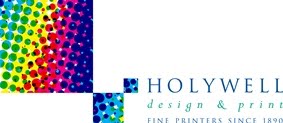Even
in this digital age, there are few organisations that do not need to commission
print at some point - letterheads, business cards, brochures, flyers, booklets,
mailings, the list goes on. Some large companies that consume very high volumes
of print will employ professional print buyers, but for most businesses where
print is an occasional requirement this luxury will not be available. For those
who are relatively new to it, buying print can seem a daunting responsibility,
full of technical terms and incomprehensible jargon - if this is the case for
you, the odds are that you are not talking to the right printer!
The
following list of things to keep in mind when selecting and briefing a printer
is basic and by no means exhaustive, but it should at least give you a place to
start from:
- A good print job begins even before you brief
a printer - at the pre-production stage. Use the best creative ingredients you
can afford. The highest quality design, photography and copywriting will always
show through in the finished result.
- If possible, talk with your printer at about
your print project when it is still at concept stage. They may be able to
suggest adjustments to the design that will save you money, or even propose an
alternative solution you may not have considered. Having our own design studioat Holywell enables us to make the process from creative concept to production
completely seamless. Because our creatives understand print fully, all designs
are optimised for cost-effective, high quality results.
- Do make sure you actually visit your
printer’s premises for a tour of their factory and printing presses. A good
printer will always be delighted to show off their workplace. Besides being a
fascinating experience, it will help give you an understanding of the processes
involved, and the capabilities of your printer. Ask to see their library of sample works and you will get a real feel for the quality of work they
produce. A factory visit will also
confirm you are not dealing with a ‘print farming’ company – a business that
simply acts as an intermediary, buying and selling print, but not actually
printing themselves.
- Expect your printer to explain things to you
in plain English and help you with each stage of the production process. If
there is something you don’t understand, don’t be embarrassed to ask to have it
clarified.
- Be sure to ask your printer for physical
samples of the materials (‘stock’ in print-speak) your job is going to be
printed on. Material can make a huge difference. You will want to compare
options and be able to touch and feel the quality of the paper or card for
yourself.
- It’s not always easy to imagine what a
finished print piece will look like, especially if it is unusual or involves
complex finishing. Your printer should always be able to provide you with a
‘mock up’ of your job – an unprinted, hand-made sample or ‘dummy’, so you can
see how it will look and work. There may be a small charge for this service.
- When you are requesting a price for print, it
may be worth asking your printer to supply ‘run on’ costs. When a job is being
printed lithographically (rather than digitally), a large element of the print
cost is in setting the job up and getting it ready to print. This means that
the difference between printing a small run or a larger run is often very
little. If it’s something you are likely to need more of in the future and you
have facilities for storage, it can make economic sense to opt for a higher
print run.
Perhaps
the most important thing to remember when buying print is that you are not
simply buying a commodity, you are purchasing a service to support you with
help and advice throughout the print process. Print buying requires an
investment of faith and trust, so it’s vital you find the right partner to work
with; a partner than not only has the right tools for the job, but one you can
genuinely relate to and enjoy working with as well.

















